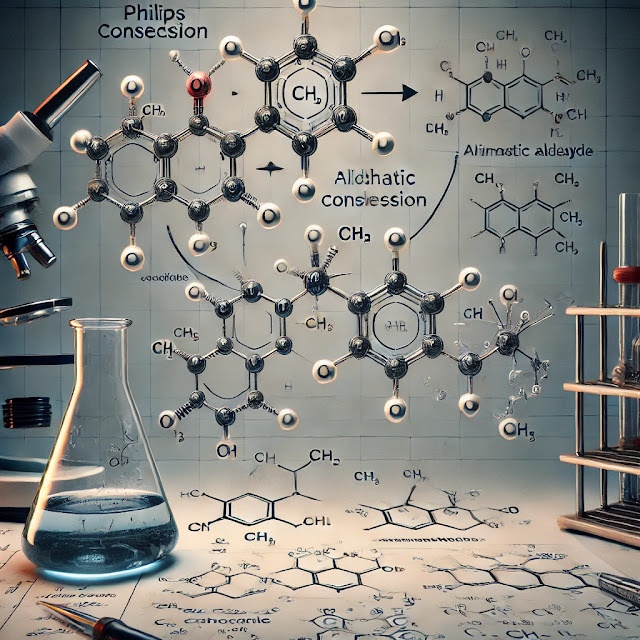Philips condensation, also known as the Phillips reaction, is a chemical reaction involving the condensation of an aromatic aldehyde with a β-keto ester in the presence of a base to produce a coumarin derivative. This reaction is named after the chemist who first reported it.
Here is a detailed explanation of the synthetic applications of the Philips condensation:
1. Synthesis of Coumarins
Coumarins are a class of compounds with a wide range of biological activities, including anticoagulant, antimicrobial, and anticancer properties. The Philips condensation is a key method for synthesizing coumarins, which are important in the development of pharmaceuticals and agrochemicals.
2. Pharmaceutical Applications
Coumarin derivatives synthesized through Philips condensation are used in the pharmaceutical industry for the development of drugs. Examples include:
- Anticoagulants: Warfarin and other coumarin-based anticoagulants are essential in preventing blood clots.
- Antimicrobial Agents: Coumarins exhibit antimicrobial properties, making them useful in treating infections.
- Anticancer Agents: Some coumarin derivatives show potential as anticancer agents by inhibiting tumor growth.
3. Agrochemicals
Coumarins produced via Philips condensation are also used in agrochemicals. They serve as fungicides, herbicides, and insecticides, helping to protect crops from various pests and diseases.
4. Fluorescent Dyes
Certain coumarin derivatives exhibit strong fluorescence, making them valuable as fluorescent dyes. These dyes are used in:
- Biological Staining: For staining cells and tissues in microscopy.
- Fluorescence Spectroscopy: Used as probes in various fluorescence-based analytical techniques.
5. Perfumes and Flavors
Coumarins have a pleasant fragrance and are used in the fragrance industry. They are components in the formulation of perfumes and flavors, adding a sweet, vanilla-like scent.
6. Materials Science
Coumarin-based compounds are used in the development of materials with specific optical properties. For instance, they are incorporated into:
- Organic Light-Emitting Diodes (OLEDs): Enhancing the performance of light-emitting materials.
- Photostable Polymers: Improving the stability of polymers under light exposure.
Reaction Mechanism
The Philips condensation mechanism typically involves the following steps:
- Deprotonation: The base deprotonates the β-keto ester, generating an enolate ion.
- Nucleophilic Attack: The enolate ion attacks the carbonyl carbon of the aromatic aldehyde.
- Aldol Addition: This forms a β-hydroxy ester intermediate.
- Dehydration: The intermediate undergoes dehydration to form the coumarin derivative.
General Reaction Scheme
Example
The Philips condensation is a valuable synthetic tool in organic chemistry, enabling the efficient production of coumarin derivatives with diverse applications in various industries.













0 Comments
Thanks for your feedback, ll get back to you soon